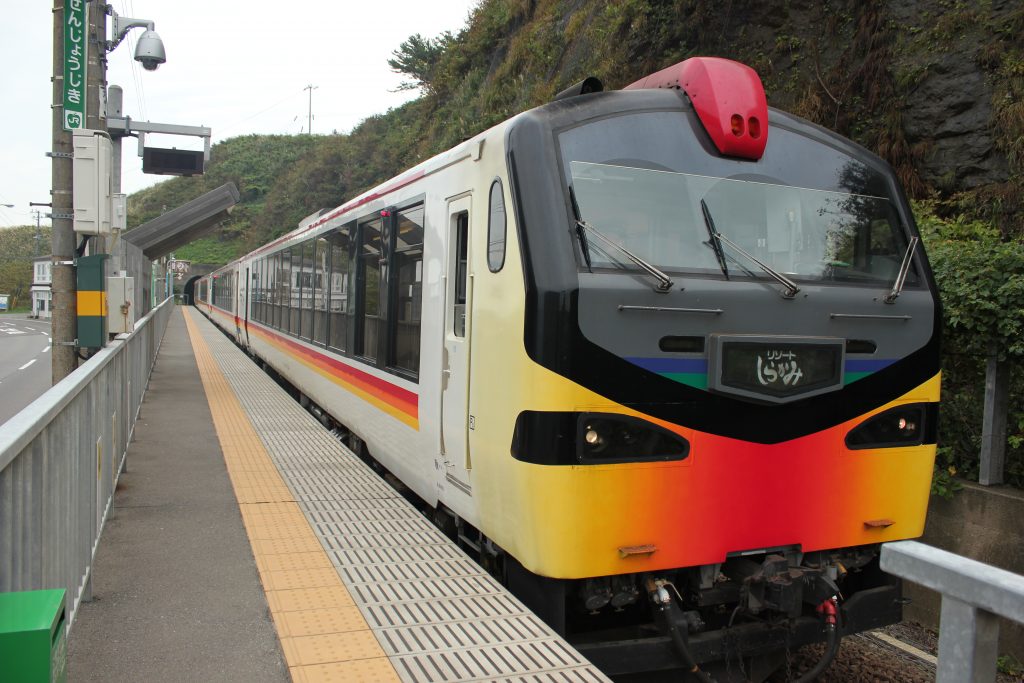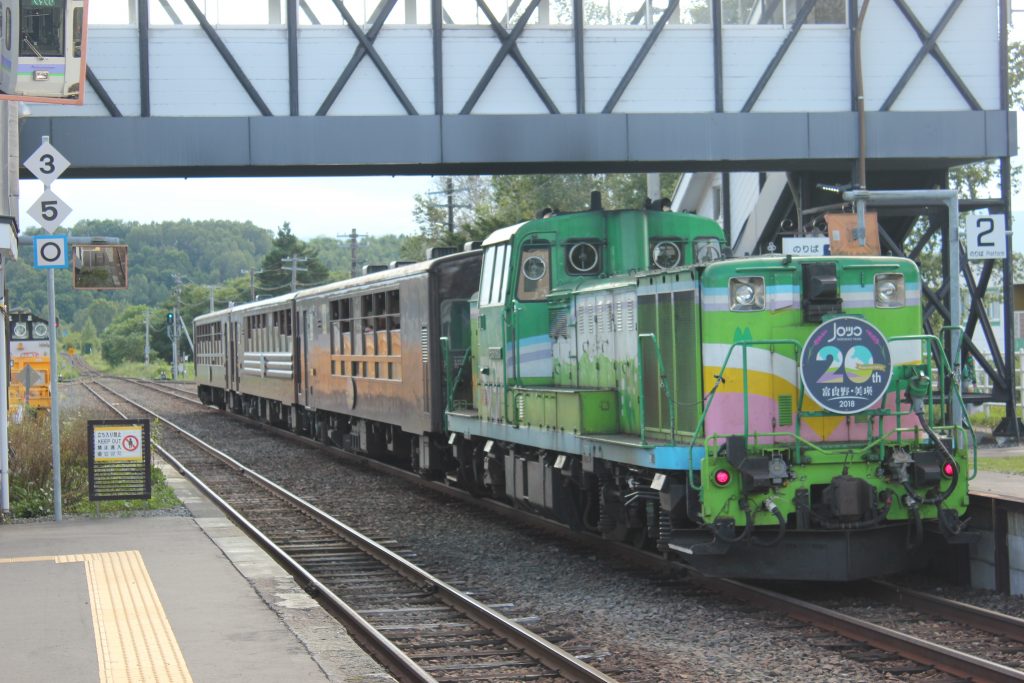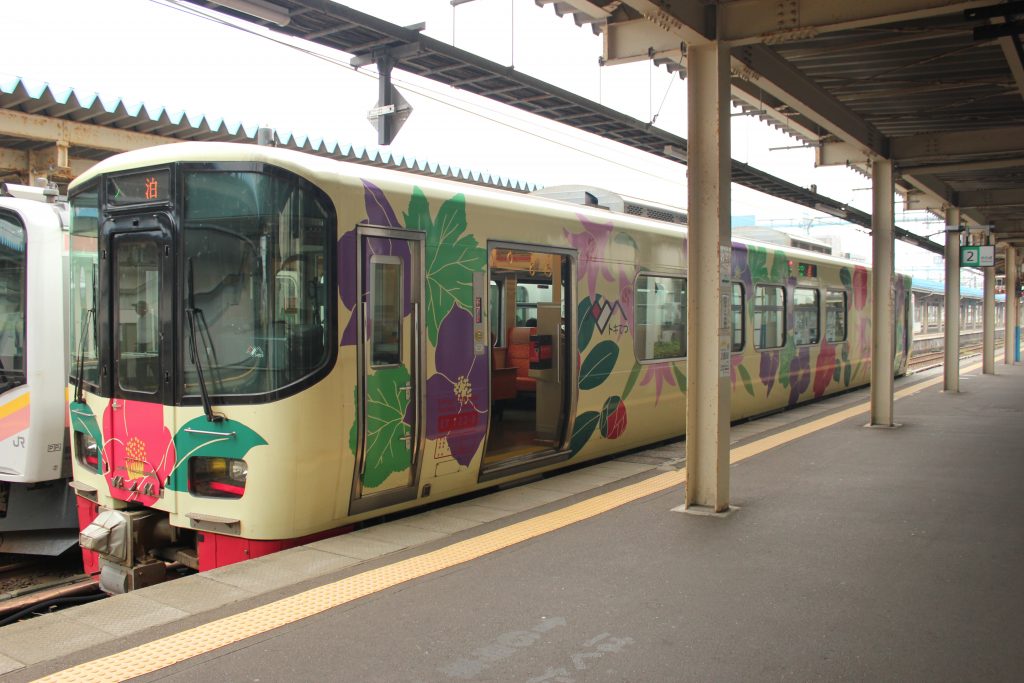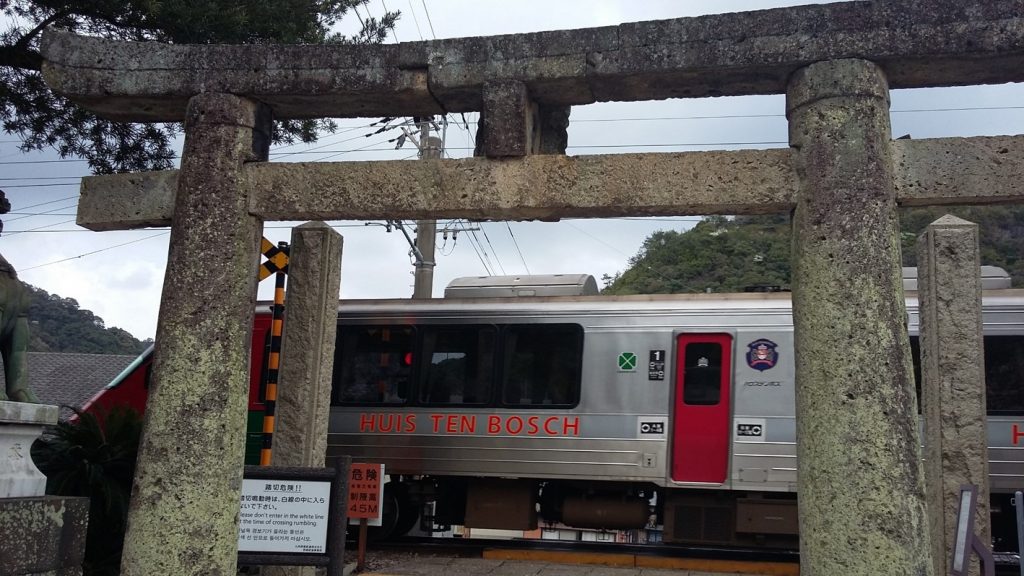by Galina Khoikhina
Today, railway tourism is highly popular in Japan. Tourist trains сan be created on the basis of trains that are no longer in use, or they can be specially designed for a specific project. One of these trains is the luxury cruise train “Seven Stars in Kyushu”. It was launched by JR Kyūshū on 15 October 2013. In a few days, the train crosses Kyūshū’s prefectures. During this journey, passengers can visit local sights, try local cuisine and participate in workshops. In 2014, “Seven Stars in Kyushu” was chosen as an example of a revitalization project in the MLIT White Paper [1]. The designer of “Seven Stars” Mitooka Eiji collaborated with Japanese artists from Kyūshū. For example, artists from Ōkawa, Fukuoka Prefecture, decorated the interior of the train with the Japanese art of woodworking (kumiko). Another example of cooperation is the porcelain used on board of the train. It is made by potters from Arita, Saga Prefecture [2].
This is a promotion video for the Seven Stars in Kyushu on the occasion of it’s 7th birthday
ACHTUNG: Daten nach YouTube werden erst beim Abspielen des Videos übertragen.
In my bachelor thesis, I studied the impact of „Seven Stars” on the revitalization of Kyūshū’s rural areas. To answer this question, I conducted a qualitative content analysis of articles that appeared about “Seven Stars” in the Yomiuri Shinbun newspaper. I analyzed articles that came out in the time interval from the launch of the train to the beginning of the pandemic. The research has shown a generally positive effect from an economic point of view. The demand for the train is many times greater than the number of available seats. The train is highly popular and attracts wealthy tourists to the region. Since the train passengers mostly live outside Kyūshū, it can be stated that they bring financial resources to the region. In addition, the articles highlighted the growing interest in Kyūshū as a destination. “Seven Stars” attracts people interested in rail transport. The articles mention the growing popularity of the tourist trains that already existed in Kyūshū, especially those whose route intersects with the luxury train. In addition, the popularity of “Seven Stars” has led to the introduction of new touristic trains, which have a similar effect. The analysis of the articles also revealed an increase in sales of local products associated with “Seven Stars“. People want to buy items like those used on the train and try the same meal as the passengers. The increase in sales of local goods also has a positive impact on the economy.
Trains hold a special place in Japan and come in many variations

Copyright © Maritchu Durand 2018

Copyright © Maritchu Durand 2018
Furthermore, there is some evidence of the positive impact of the train on society. Articles repeatedly mentioned that for locals the arrival of the train becomes an event. They cheerfully welcome the train and thus show their hospitality. This initiative of the locals is also encouraged by JR Kyushu. It is important to note that the articles also showed an increase in the motivation of local farmers. Thus, the train also has a positive impact on the local people on a social level. Although the train changes its route regularly and therefore cannot serve as a stable revitalization factor for a particular location, it still has a positive effect on the island in general. To summarize, my bachelor’s research showed that, according to the news coverage in the Yomiuri Shinbun, the introduction of the „Seven Stars in Kyushu” project had an overall positive effect on the economic and social levels.
Even small local trains can be a special attraction

Copyright © Maritchu Durand 2018

Copyright © Cornelia Reiher 2018
[1]
MLIT (Ministry of Land, Infrastructure, Transport and Tourism) (2014), Kokudo kōtsū shiro [White Paper of the Ministry of Land, Infrastructure, Transport and Tourism], https://www.mlit.go.jp/common/001113556.pdf (Accessed on 25 October 2021).
[2]
Cruise Train „Seven Stars in Kyushu” (2021), „The train” https://www.cruisetrain-sevenstars.jp/english/train/ (Accessed on 25 October 2021).
Galina Khoikhina is a student in Freie Universität Berlin’s Japanese Studies master‘s program. She has written her bachelor‘s thesis about tourism in rural Japan.
